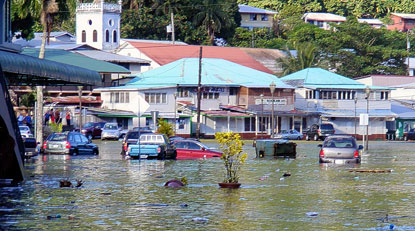Researchers have found to their utmost surprise that the deadly South Pacific tsunami which submerged several South Pacific islands last year was caused by the combination of two deadly earthquakes.
The initial view of the scientists was that a single earthquake of the magnitude of 8.1 on the rictor scale would have caused the South Pacific tsunami which occurred on September 29th killing 200 people in Samoa, Tonga and American Samoa. Two teams were conducting the research and they came to a conclusion that the South Pacific disaster occurred as a result of two big earthquakes and they struck within minutes. The combined earthquake has measurement much more than 8 and hence one can easily understand the intensity of the earthquakes that led to the formation of the tsunami.
The most notable findings of the research say that the earthquakes struck along different fault lines and they had different ruptures. It was found that the tsunami waves did not arrive as per the predicted schedule and from there scientists started thinking that something more serious and complicated must have happened somewhere.
The vibrations of the second earthquake can be found if one looks the scale very hard. The ground vibrations of the first earthquake were so strong that they masked the energy released by the second earthquake. The second earthquake can also have the same magnitude as the first one.
The research work was lead by geophysicist John Beavan of the New Zealand geological agency and the findings are published in the journal Nature.




